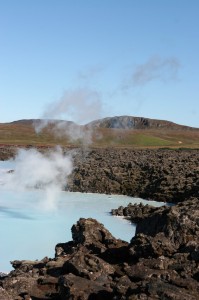Last time we dealt with the design of the spa reception. Today we make one step further, i.e. into the spa changing rooms. At first glance they may not appear to be especially important but there are a few things to keep in mind.
After having dealt already with the design of the spa’s entrance area as well as with the rooms and hallways in a spa and how they should be arranged, today we are moving forward to yet another very important room in a spa: the reception.
“The sea cures all ailments of man.” – Plato
Since ancient times humankind has always turned to water for healing purposes. Water was considered sacred and nobody questioned its balancing and well-being effects. Today we use the term “Thalassotherapy” and treatments are available almost everywhere. But what is Thalassotherapy exactly?
After dealing with the importance of the right design of the spa’s entrance area and the perspective of the guests during their stay we are today focusing on how the rooms and hallways should be laid out to your guests’ benefit.
Last time, we set off on our journey starting with the guest entering the Spa. Today, we make one step further and look at the guests’ perspective during their stay in the spa and what you can do in terms of spa interior design in order to make it as perfect as possible.
After carrying out more than 100 audits across the world I have seen very different kinds of hotel spas. We have collected my insights regarding the atmosphere in spas on our blog in a series entitled „Every inch in a Spa is Psychology“.
We have already presented the many healthful benefits of massage therapies in one of our earlier blog posts.
Though this delightful treatment can does wonders to our body, there are still some cases where we have to say “NO” to a massage.
For millennia, healing waters have attracted people’s attention, simply because they were different. They smelled different, for instance sulphurous; they tasted highly metallic or contained a lot of carbonic acid (which made them last longer and “taste better”). Especially thermal waters have always been spectacular, as the sight of freely escaping hot water from the earth was and still is fascinating. These locations often were places of worship and already known for many thousands of years. Read more
When entering a hotel the guest is already received in the lobby by the interior alone. In the spa, it goes even further. Here the design, the light, the materials, the fragrances and sounds fascinate, inspire and “carry away” the guest. They can downright feel the place. The composition of these stimuli does something to our minds, which goes beyond the simple joy of seeing something beautiful. In other words: A good spa with the essential spa elements can have the right to claim to be a walk-in work of art.
There are many different ways thermal water benefits our health. Generally speaking, warm water is good for us. The warmth in combination with zero gravity act deeply relaxing and make us feel safe. While bathing in thermal water, we can put our thoughts in order. The water serves as a support and provides warmth in the form of swimming pools, baths, showers or – as is common in Ayurvedic tradition – in the form of a drink for warmth from the inside.













